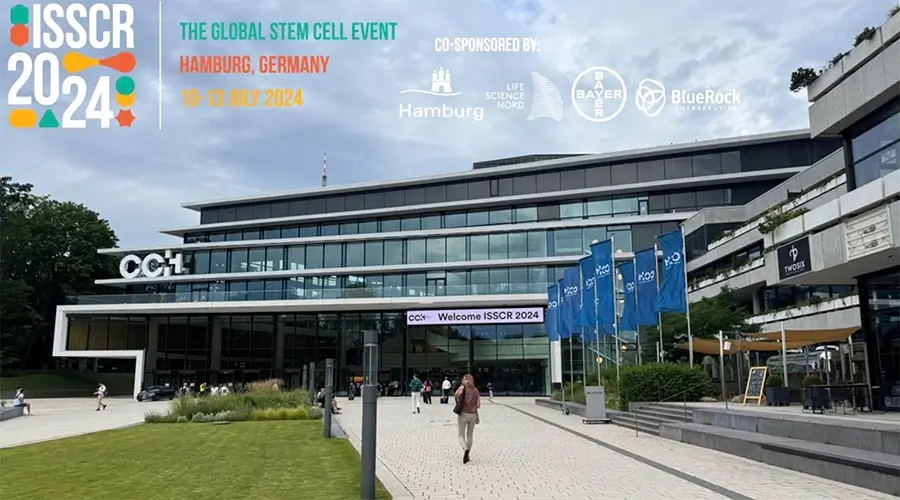Carolina from our team had the pleasure of attending the 2024 ISSCR conference in Munich, Germany, from July 10-13! Below, she shares her insights and experiences from the event.
—
The International Society for Stem Cell Research (ISSCR) Annual Meeting 2024 was a four-day global event that brought together a diverse array of professionals from all corners of the world that have a special interest in stem cell research and regenerative medicine. This year, the conference was held in the vibrant city of Hamburg, Germany, drawing in not only scientists and clinicians but also businesspeople, regulatory experts, and ethicists specializing in bioethics.
The content of the conference was divided into 6 concurrent tracks:

Magdalena Goetz, from the University of Munich, was the first plenary session speaker and talked about organellar heterogeneity. The general dogma has been that organelles are the same in all cells. However, new emerging evidence shows that the proteins associated with the cellular organelles (centrosomes, mitochondria, nucleoli…) can differ quite a lot between cell type and which developmental stage the cells are in.
For example, when they started to profile the centrosome of neural cells, they found that more than half of their proteome is different between very closely related cells. The same was found for mitochondria and nucleoli. Goetz also highlighted the idea of moonlighting proteins; proteins that have different functions depending on where they are and when they are there in their development.
There were many speakers that covered many different topics relating to stem cells, but my personal favorite session was about stem cells in low earth orbit.

We all know how important gravity is for us here on Earth, and that there are physiological changes occurring in astronauts that go to space due to the big environmental changes that they are subjected to; some of the more well-known side effects from space travel are muscle tissue atrophy and bone loss.
However, exactly how important gravity is for tissue regeneration and development is still a big mystery and a whole new dimension for discovery. This is why there is now a whole new field of study focusing on how stem cells are affected by microgravity. For example, there was a study where they sent mouse embryonic stem cells to the International Space Station (ISS). These cells are known as pluripotent, meaning that they can become (differentiate) any cell type in the body.
Their experiments revealed that the mechanical unloading of these cells in microgravity has the capacity for preserving their ‘stemness,’ the crucial trait that sets stem cells apart from other cell types in our body, by inhibiting their differentiation. These findings might help understand why astronauts have diminished tissue regeneration capacity while in space.
Furthermore, scientists are also interested in how microgravity can help with scaling up the production of high-quality adult stem cells, as this has been a huge bottleneck in the field of cell- and gene therapy due to the challenges of mimicking the stem cells’ true environment using 2D culturing methods. Because microgravity inhibits differentiation and preserves the stemness of the cells, these environmental conditions can be leveraged to produce large quantities of stem cells in 3D cultures, more closely resembling their natural growth condition in the human body. There are currently ongoing projects assessing the expansion of hematopoietic stem cells in space for clinical application (InSPA-StemCellEX-H1). If deemed successful and feasible, it would revolutionize the way we think about cell expansion for cell therapies and could lead to large-scale biomanufacturing facilities in space, where they can send donor cells into orbit for expansion and then return it to Earth to be reintroduced to patients.
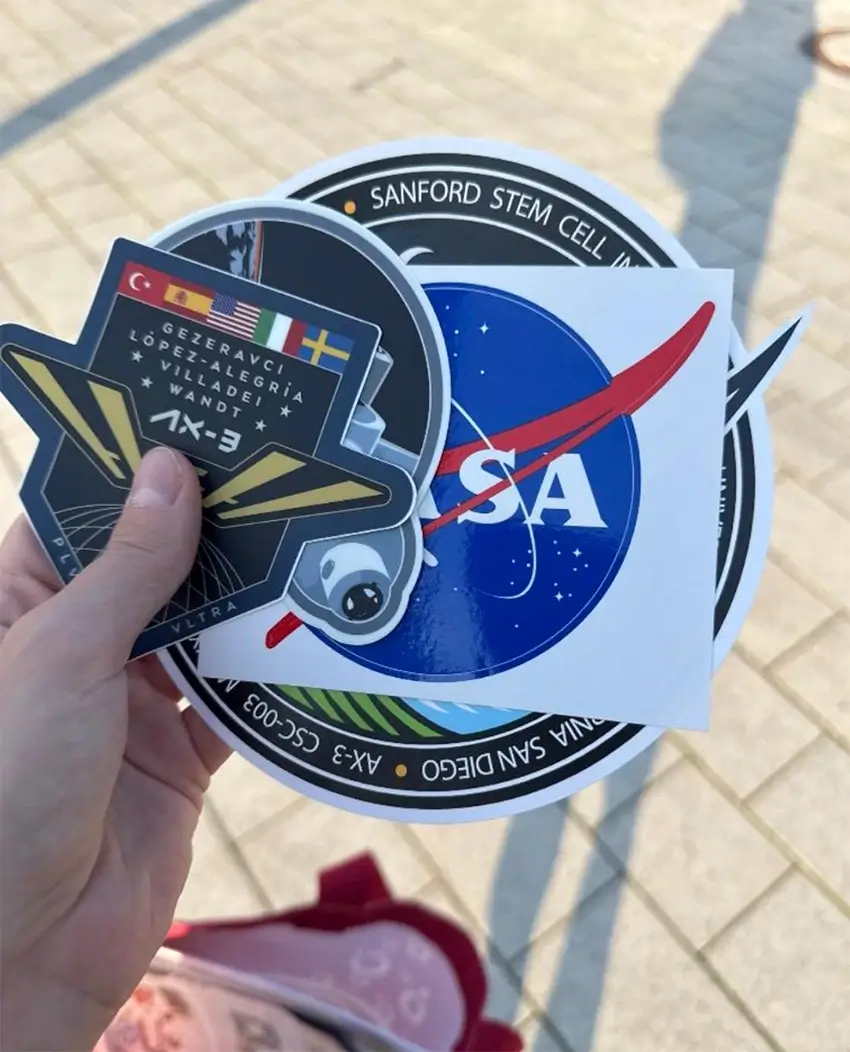
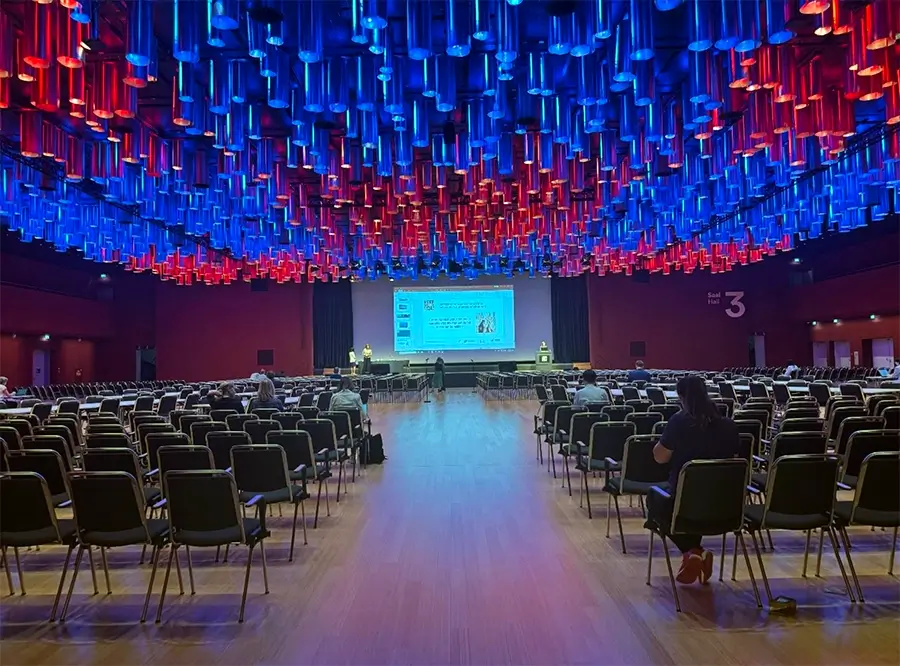
This year’s ISSCR has been said to be the most clinically focused to date. One of the sessions that was also quite interesting to me was the session called “Translation of Academic Research: From Nice to Have to Clinical Imperative” which addressed the complex challenges of moving advanced therapies from the lab to the clinic. A significant concern highlighted was the fragile state of Advanced Therapy Medicinal Products (ATMPs) in the EU, where 10 out of 26 approved therapies have already been withdrawn, according to the 2024 EMA CAT report. Despite these setbacks, the majority of these therapies originated from academic research before reaching the market through commercial entities.
Dr. Stefan Irion from BlueRock provided a sobering overview of the economic challenges in developing gene and cell therapies. He pointed out the substantial costs associated with bringing these therapies to market, often outstripping revenue due to limited patient reach and reimbursement issues. For instance, Biogen recently incurred a $542 million loss from two failed gene therapies. While these therapies are often marketed as curative “one and done” solutions, Dr. Irion cautioned that this is not always the case, urging a focus on scalability, cost-efficiency, and addressing unmet patient needs early in the development process.
The session also explored the contentious idea of allowing academic institutions to produce cheaper versions of successful therapies. While some audience members supported this, the panel largely opposed it, citing the high costs and rigorous scrutiny required to bring these therapies to market. Sustainability and competition were key themes, with the panel advocating for more competition to strengthen the ecosystem.
An audience member raised concerns about increasingly stringent regulatory requirements, making it harder to transition therapies from research to clinical application. The panel likened this to an “arms race,” whereas therapies become safer and more effective, regulatory expectations rise accordingly. They warned that any misstep could result in significant reputational damage, especially for emerging technologies like cell and gene therapies.
Dr. Lisa Ott de Bruin shared her work on using CRISPR/Cas9 to develop a lentiviral gene therapy for RAG1-SCID, illustrating the intricate collaboration needed among various stakeholders, including GMP facilities, regulators, and patients. She stressed the importance of involving clinicians and patients early in the research process to ensure that targeted diseases are those most in need of innovative therapies. Additionally, she highlighted the critical role of GMP facilities in designing potency tests for cell and gene therapies, a task that requires early and continuous stakeholder engagement.
The session concluded with a key question: Should the patient perspective be a central element in decision-making for translation grants? This question emphasized the session’s central theme—the successful translation of academic research into clinical practice depends not only on scientific advancement but also on actively involving patients and other stakeholders throughout the process.
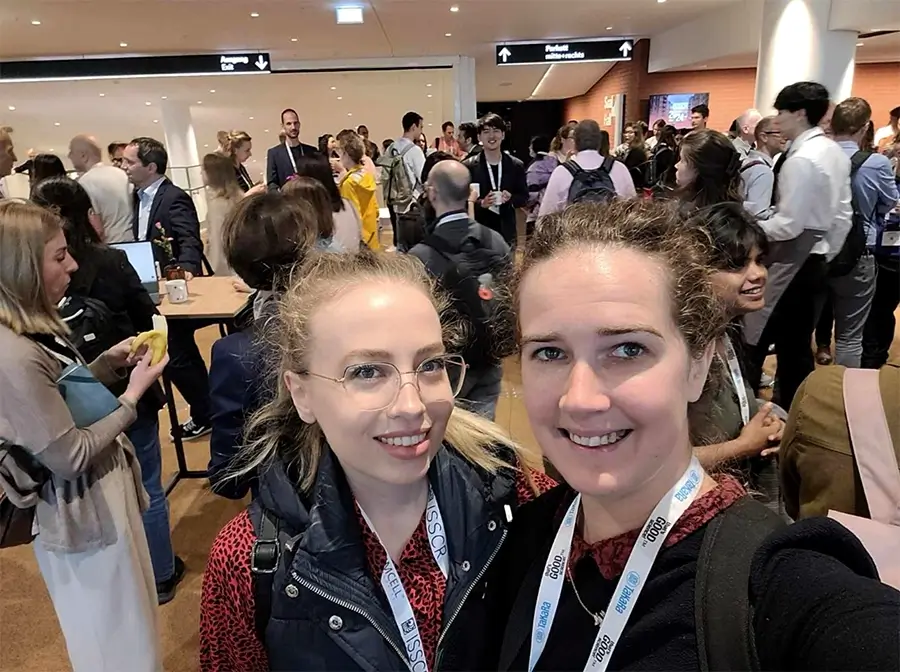
I was also delighted to reconnect with some friends from my time at Takara Bio Europe. It was particularly great to catch up with Clemence Bonhomme, who was one of my mentees during my time working there as a GMP cell production associate. Although she didn’t need much mentoring from me, as she was already highly skilled with stem cells, it was rewarding to see how far she has come.
Clemence is currently working on establishing robust xeno-free 2D and 3D mesenchymal stem cell expansion protocols at scale for both research and GMP use, ensuring that these cells maintain their multipotent properties.
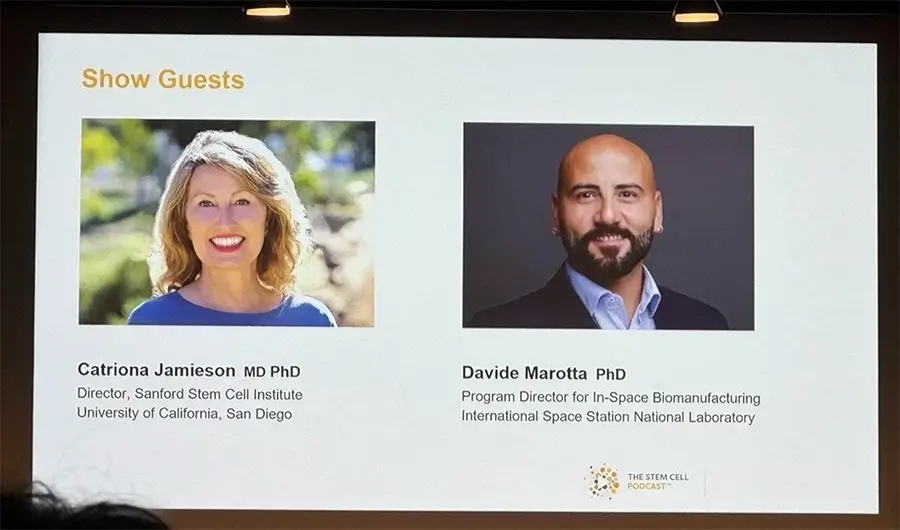
Another favorite session I attended was a podcast session by “The Stem Cell Podcast” which was held live for the first time ever. It was their 272nd episode, and was titled “Live at ISSCR 2024: Stem Cell Research in Space” and featured Drs. Davide Marotta and Catriona Jamieson. It was amazing to attend this live, as I have been following the podcast for more than a couple of years now, and seeing the hosts, Dr. Daylon James and Dr. Arun Sharma, in real life was super cool!
They produced a new episode each day during the ISSCR to document everything happening and showcase the latest scientific advancements presented at the conference. For anyone who missed this year’s ISSCR (or previous ones), I highly recommend checking them out!
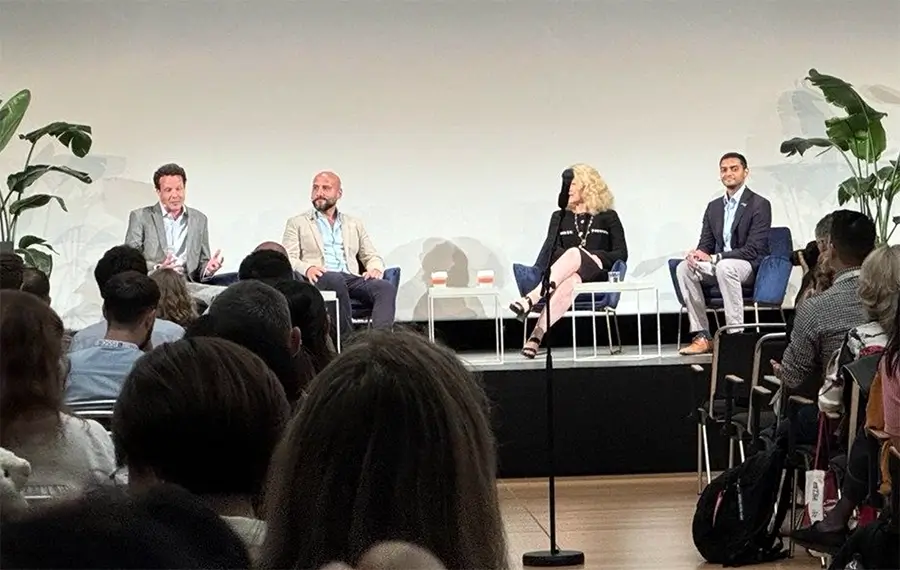
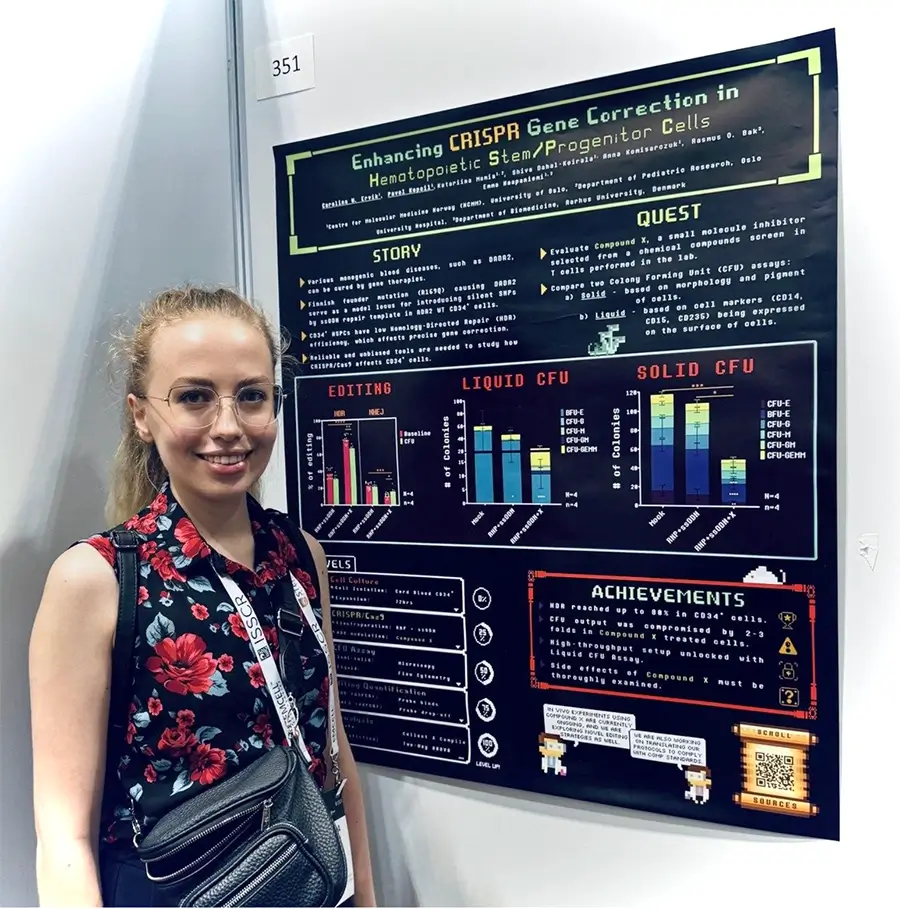
I also had the opportunity to present my poster titled “Enhancing CRISPR Gene Correction in Hematopoietic Stem/Progenitor Cells,” which was featured in the ‘New Technologies’ category. The poster garnered significant attention from a wide range of attendees, including representatives from Thermo Fisher and various regulatory bodies. The interest and feedback I received highlighted the growing excitement and potential impact of advancements in gene editing technologies.
All in all, I had a lovely time in Hamburg attending ISSCR 2024, and I look forward to hopefully attending this conference again in the future!
